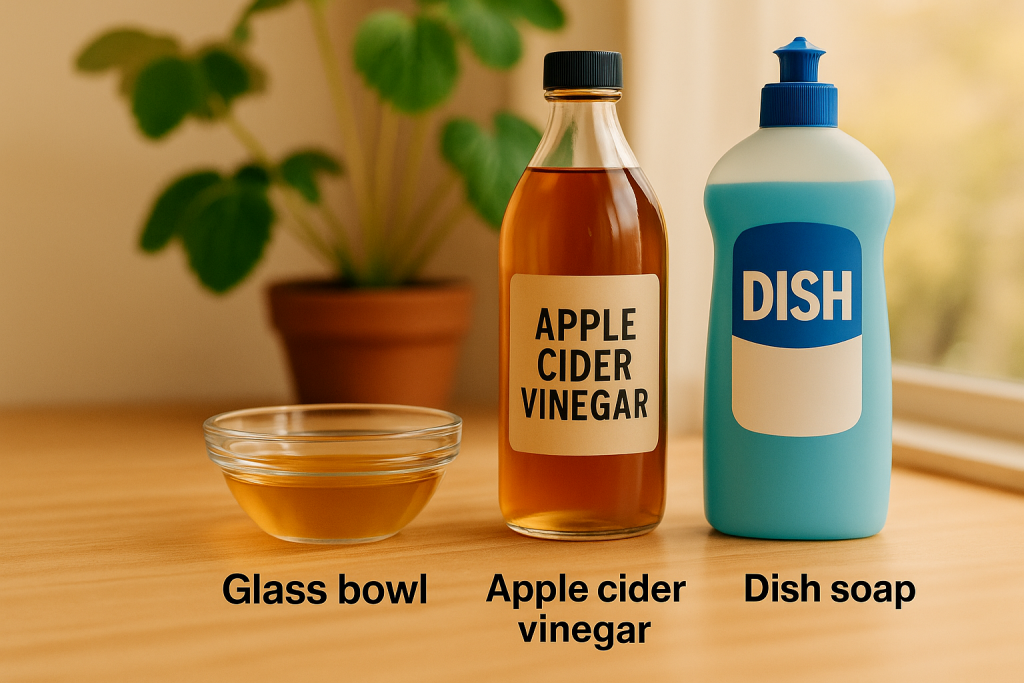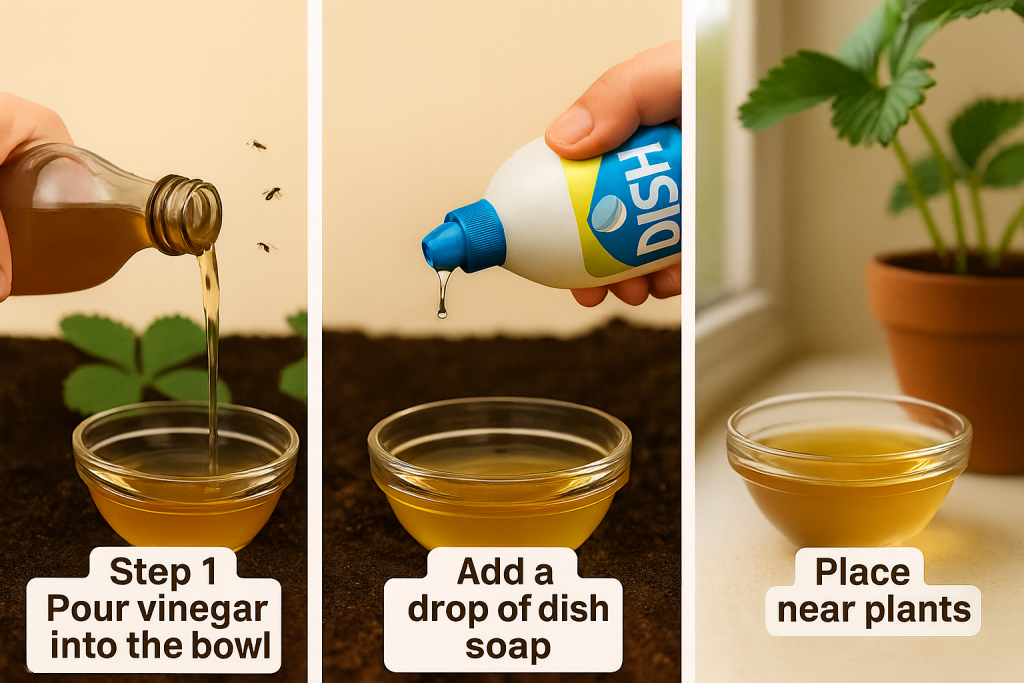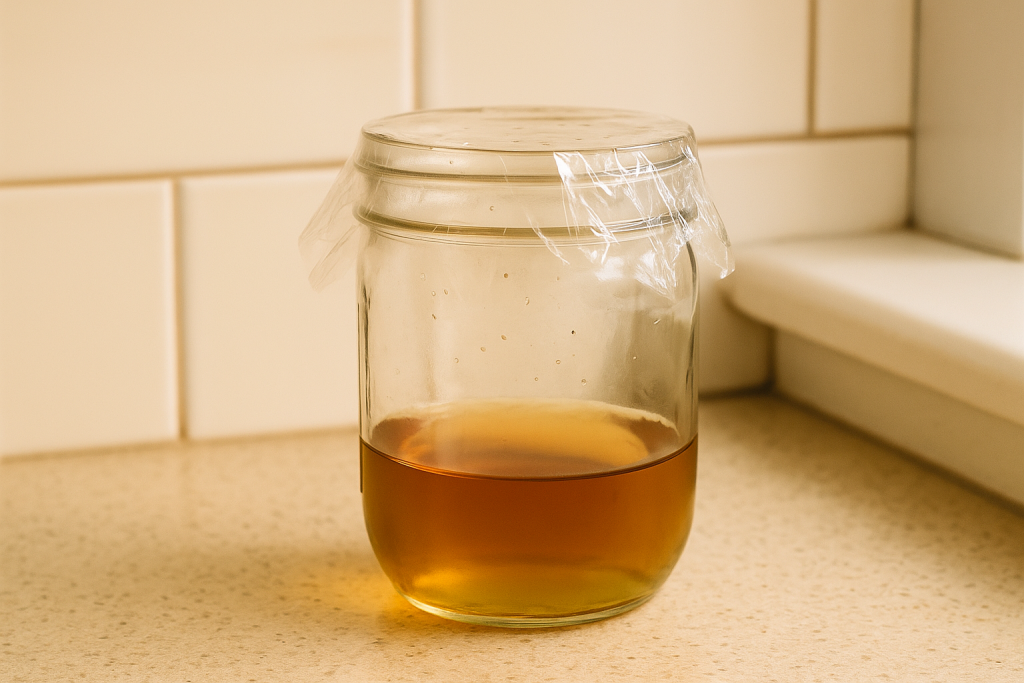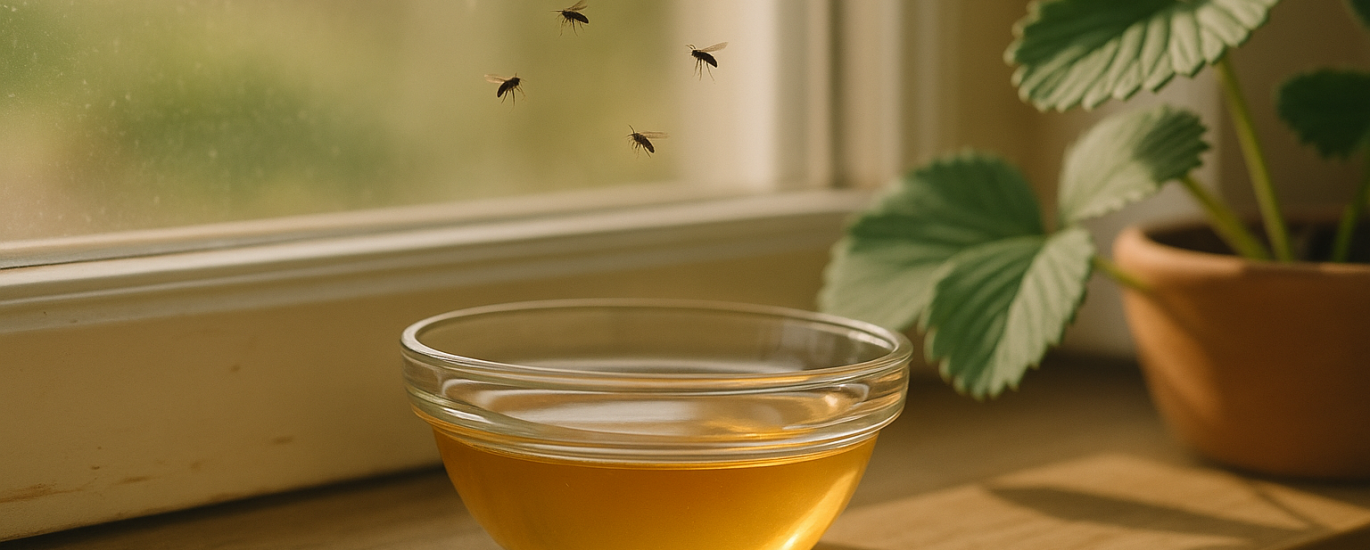A Simple DIY Fix for Fruit Flies & Gnats — No Chemicals Needed
Why Are Bugs Buzzing Around Your Plants?
If you’ve noticed tiny flies hovering around your tomato pots or gnats lurking near your indoor herbs, you’re not alone. These pesky garden bugs thrive in warm, moist environments — especially around overripe fruit, compost, or even wet soil.
But before you reach for chemical sprays, there’s a gentler, organic fix that works surprisingly well — and it only takes 2 minutes to make!
The Natural Trap: What You’ll Need
This trap uses the natural appeal of apple cider vinegar to attract bugs, and a bit of dish soap to trap them. It’s safe, easy, and garden-friendly.
Ingredients:
- 1 small glass bowl
- 3 tablespoons apple cider vinegar (raw, unfiltered works best)
- A drop of dish soap
- A sunny spot near plants

Step-by-Step: How to Make It
✅ Step 1: Pour vinegar into the bowl
Use just enough to cover the bottom — about 1 inch is plenty.
✅ Step 2: Add a drop of dish soap
This breaks the surface tension so bugs sink instead of escaping.
✅ Step 3: Place near affected plants
Put the bowl near areas where bugs gather — especially near kitchen herbs, compost bins, or fruiting plants.
Tip: Use multiple bowls in large gardens or greenhouses for better coverage.

Why It Works
- Vinegar’s scent mimics overripe fruit — irresistible to flies.
- Soap traps the bugs by breaking the surface tension.
- No harmful residue, safe for pets and pollinators.
It’s a proven trick many home gardeners swear by — especially effective for fruit flies, fungus gnats, and aphid-attracting hoverflies.
The Science Behind This Simple Trap
You might wonder — why do bugs love vinegar?
Apple cider vinegar gives off a fermentation-like scent that mimics overripe or rotting fruit — the favorite meal of fruit flies, fungus gnats, and drain flies.
Once they land on the surface, a drop of dish soap breaks the surface tension, causing them to sink immediately and preventing escape.
According to Dr. Ellen Hayes, entomologist at Oregon State University:
And best of all — this method:
- Doesn’t harm pollinators (like bees and butterflies)
- Is chemical-free, safe for pets and kids
- Biodegradable and eco-conscious
It’s a tiny ecological trap that fits perfectly into any organic gardening routine.
When to Use It
- After watering houseplants or fertilizing (when gnats emerge)
- Near compost or fruiting vegetables
- During warm, humid months when bugs peak
Real Results: What Gardeners Are Saying
“I placed it near my basil, and by the next morning—15 gnats gone!”
“Simple, cheap, and actually works. I love that it’s kid-safe.”
Frequently Asked Questions
Q: Can I use white vinegar instead of apple cider vinegar?
A: You can, but results are often weaker. Apple cider vinegar has a richer scent profile that more closely mimics decaying fruit — which is what attracts bugs best.
Q: Will this trap harm my pets or bees?
A: No. It is open-bowl only, and pets typically ignore vinegar. Bees are not attracted to vinegar, so pollinators remain safe.
Q: How often should I replace the trap?
A: Every 3–5 days, or when the surface gets full of bugs. For longer use, try covering the bowl with perforated plastic wrap — bugs still get in, but evaporation slows.
Q: What bugs does this trap actually catch?
A: Commonly:
- Fruit flies
- Fungus gnats
- Drain flies
- Not effective for aphids or spider mites directly — but reduces their vectors.
Bonus Tip: Make a Refillable Trap
Use small mason jars with pierced plastic wrap over the top for a longer-lasting version. Great for indoors!

In Summary
Bugs in your garden? Skip the toxic sprays.
This DIY vinegar trap is safe, budget-friendly, and surprisingly effective.
Minimal ingredients
Easy cleanup
Friendly for families, pets & pollinators
Save & Share This Tip!
Help fellow gardeners by sharing this post or pinning the recipe. You’ll be surprised how many friends have the same issue!
Want More Garden Fixes Like This?
Subscribe to Greenmuse.io
Follow us on YouTube | Pinterest | Facebook for quick, safe gardening solutions





